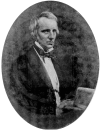The history of hiatal hernia surgery: from Bowditch to laparoscopy
- PMID: 15622007
- PMCID: PMC1356862
- DOI: 10.1097/01.sla.0000149430.83220.7f
The history of hiatal hernia surgery: from Bowditch to laparoscopy
Abstract
Objective: This review addresses the historical evolution of hiatal hernia (HH) repair and reports in a chronological fashion the major milestones in HH surgery before the laparoscopic era.
Methods: The medical literature and the collections of the History of Medicine Division of the National Library of Medicine were searched. Secondary references from all sources were studied. The senior author's experience and personal communications are also reported.
Results: The first report of HH was published in 1853 by Bowditch. Rokitansky in 1855 demonstrated that esophagitis was due to gastroesophageal reflux, and Hirsch in 1900 diagnosed an HH using x-rays. Eppinger diagnosed an HH in a live patient, and Friedenwald and Feldman related the symptoms to the presence of an HH. In 1926, Akerlund proposed the term hiatus hernia and classified HH into the 3 types that we use today. The first elective surgical repair was reported in 1919 by Soresi. The physiologic link between HH and gastroesophageal reflux was made at the second half of the 20 century by Allison and Barrett. In the midst of a physiologic revolution, Nissen and Belsey developed their famous operations. In 1957, Collis published his innovative operation. Thal described his technique in 1965, and in 1967, Hill published his procedure. Many modifications of these procedures were published by Pearson and Henderson, Orringer and Sloan, Rossetti, Dor, and Toupet. Donahue and Demeester significantly improved Nissen's operation, and they were the first to truly understand its physiologic mechanism.
Conclusion: Hiatal hernia surgery has evolved from anatomic repair to physiological restoration.
Figures
References
-
- Hochberg LA. Thoracic Surgery before the 20th Century. New York: Vantage Press; 1960.
-
- Bettex M, Oesch I. The hiatus hernia saga: ups and downs in gastroesophageal reflux: past, present, and future perspectives. J Pediatr Surg. 1983;18:670–680. - PubMed
-
- Laennec RTH. De l'Auscaltation Mediate, ou Traite du Diagnostic des Maladies des Poulmons et du Coeur, Fonde Principalement sur ce Nouveau Moyen d'Exploration. Paris: Chez J.-A. Brosson et J.-S. Chaude; 1819. - PubMed
-
- Cooper A. The Lectures of Sir Astley Cooper, Bart. F.R.S. Surgeon to the King, on the Principles and Practice of Surgery, with Additional Notes and Cases by Frederick Tyrrell. London: Thomas and George Underwood; 1824–1827.
-
- Bowditch HI. A Treatise on Diaphragmatic Hernia. Buffalo: Jewett Thomas; 1853.
Publication types
MeSH terms
LinkOut - more resources
Full Text Sources
Medical






